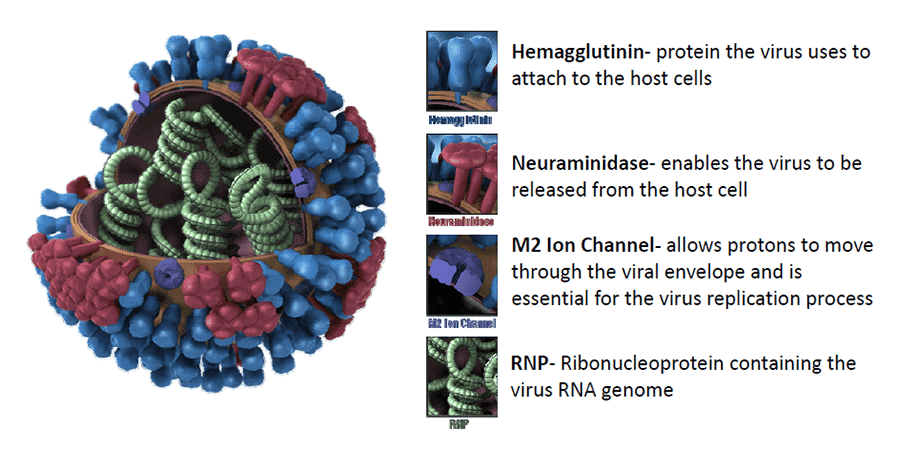The influenza type A virus, known as H1N1 is a respiratory infection that was popularly named “swine flu.” The virus was first recognized in April 2009 and spread quickly to 74 countries worldwide. The World Health Organization (WHO) declared the virus a global pandemic. This was the first global pandemic in over 40 years and was listed as a global pandemic for more than a year. The name “swine flu” means influenza in pigs and occasionally the influenza virus can be transmitted to people who work with pigs. Very seldom does the person who works with pigs transmit the virus to others, but this was the case with H1N1. The virus does not spread by consuming pork.
So what does H1N1 mean?
Influenza viruses are split up into three broad groups known as influenza A, B and C. Influenza A is the most common type, and H1N1 is a type of influenza A. The designation “H1N1” indicates unique traits, which exhibit characteristics that identify the virus to the immune system and allows for attachment and replication of the virus. The “H” (hemagglutinin) and the “N” (neuraminidases) are both proteins that are found on the outer shell or envelope of the virus. Different viruses have different hemagglutinin and neuraminidase proteins. There are 16(H1 to H16) known types of hemagglutinin and 9(N1 to N9) known types of neuraminidase, which gives 144 different possible combinations of these proteins.

How does the influenza virus change?
Influenza viruses can change in two different ways: antigenic drift and antigenic shift. Antigenic drift occurs more commonly and refers to small, gradual changes that occur through mutations in the genetic material that cause small changes in the surface proteins hemagglutinin and neuraminidase. Antigenic drift produces new virus strains that may not be recognized by the immune system, even if it has been primed (by vaccination or prior infection) to recognize other influenza strains. A person infected with a particular influenza strain creates antibodies that recognize that strain of virus, but, if a new strain appears, the older antibodies will not recognize it, causing the person to become sick again. This is one reason a person may get the flu more than once during the flu season and why it is important to create vaccines against the viruses that are currently circulating the population. Every year the vaccine is updated to keep up with changes in the circulating influenza viruses so it is important to be immunized annually.
Antigenic shift refers to an abrupt, major change that produces a new influenza subtype in humans that was not previously transmitted between people. Antigenic shift occurs through animal to human transmission or through mixing of human influenza A and animal influenza A virus genes to create a new human influenza A subtype with new types of hemagglutinin, neuraminidase or both. When this happens, most people have little or no protection against the new influenza virus, as was the case in the H1N1 virus.
The 2009 H1N1 influenza virus had two genes from flu viruses that normally circulate in pigs in Europe and Asia, plus avian and human genes. This virus was originally referred to as “swine flu” because laboratory testing showed that its gene segments were similar to influenza viruses that were most recently identified in and known to circulate among pigs. The CDC believes that this virus resulted from antigenic shift, which as noted above is a process through which two or more influenza viruses can swap genetic information by infecting a single human or animal host. When antigenic shift occurs, the virus that emerges will have some gene segments from each of the infecting parent viruses and may have different characteristics than either of the parental viruses, just as children may exhibit unique characteristics that are like both of their parents. In this case, the shift most likely occurred between influenza viruses circulating in North American pig herds and among Eurasian pig herds. Influenza type A viruses can undergo both antigenic drift and shift, while the influenza type B viruses only change by antigenic drift.